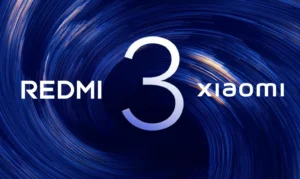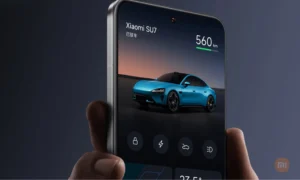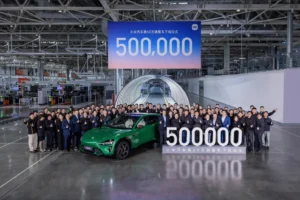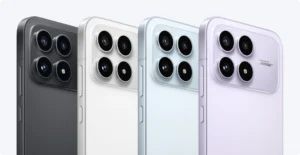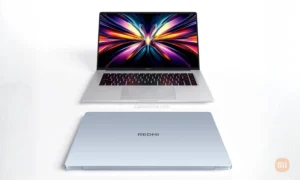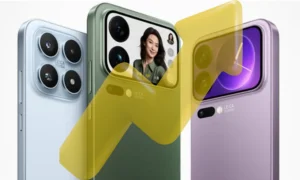iOS 26 vs. HyperOS: Apple’s Xiaomi-Inspired Features?
iOS 16’s Striking Resemblance to Xiaomi’s HyperOS: Inspiration or Imitation?
The tech world is abuzz with speculation following Apple’s WWDC 2025 announcement of iOS 26. Many observers have noted striking similarities between several of its new features and those already present in Xiaomi’s HyperOS, sparking a lively debate about inspiration versus imitation. This article delves into seven key features of iOS 26 that bear a remarkable resemblance to Xiaomi’s innovative operating system, examining the evidence and encouraging thoughtful discussion.

Seven iOS 26 Features Echoing Xiaomi’s HyperOS
The similarities between iOS 26 and HyperOS go beyond superficial resemblance. Let’s examine seven specific areas where Apple’s latest OS appears to have drawn significant inspiration from Xiaomi’s design and functionality:
1. Liquid Glass Design and Translucent Aesthetics
iOS 26 introduces the “Liquid Glass” design language, featuring translucent elements in icons, menu bars, and the lock screen. This creates a dynamic and modern feel reminiscent of HyperOS’s minimalist and fluid interface. HyperOS, particularly its control center and widgets, prioritize clean, transparent interfaces. While Apple cites visionOS as inspiration, the similarity to HyperOS’s established aesthetic is undeniable, raising questions about the extent of Apple’s influence.
2. Advanced Home Screen Customization
iOS 26 allows unprecedented home screen personalization. Users can freely place apps and widgets anywhere, even leaving empty spaces to highlight the wallpaper. This mirrors HyperOS’s flexible home screen customization, a feature Android users have enjoyed for years and which Xiaomi has continually refined. iOS 26’s ability to adapt icons to the wallpaper color further echoes HyperOS’s visual customization options.
3. Redesigned Control Center
iOS 26’s revamped control center lets users create and resize custom control groups, making it more visually appealing and accessible from the home screen. This strongly resembles HyperOS’s control center, which introduced a compact music widget and optimized brightness and volume controls for easy one-handed access. Xiaomi’s intuitive control center has been praised for its ergonomics, a design philosophy seemingly adopted by Apple.
4. Enhanced AI Ecosystem Integration
Apple has opened iOS 26 to developers for integrating Apple Intelligence, its AI suite, into third-party apps. Xiaomi has also been developing an interconnected ecosystem with HyperOS, where AI plays a central role in connecting smartphones, wearables, and smart home devices. The offline functionality of Apple’s third-party AI integration mirrors Xiaomi’s strategy for creating a seamless ecosystem with the smartphone as its core.
5. Dynamic Transitions in Apple Music (AutoMix)
iOS 26’s AutoMix in Apple Music uses AI to create smooth transitions between songs, mimicking a DJ experience. HyperOS has experimented with similar features, integrating seamless transitions and AI-based recommendations that adapt to song rhythm and style. While Apple’s execution is refined, the concept of dynamic transitions isn’t new and seems to have roots in Xiaomi’s earlier implementations.
6. Bolstered Privacy Features
iOS 26 strengthens privacy with options to lock apps using Face ID, Touch ID, or a passcode, and hide them in a protected folder. HyperOS has implemented similar features, allowing users to hide and password-protect apps. This functionality has been well-received by privacy-conscious users. Apple’s hidden app folder bears a striking resemblance to Xiaomi’s data protection features, hinting at possible influence.
7. iOS 26 Naming Convention
Apple’s jump from iOS 18 to iOS 26, aligning the OS name with the year of its expected major expansion (2026), is intriguing. Xiaomi has announced similar plans to rename its next major update to HyperOS 26, building on Android 16. This strategic move to standardize OS names by year might be a mutual response to simplifying version identification for consumers, but the coincidence has fuelled speculation about Apple following Xiaomi’s lead.
Inspiration or Blatant Copying? A Closer Look
The relationship between Apple and Xiaomi has long been marked by accusations of copying. From the design of devices like the Xiaomi Mi 8, reminiscent of the iPhone X, to the MIUI 6 interface, compared to iOS 7, Xiaomi has been accused of taking “inspiration” from Apple. However, some argue the influence is reciprocal, with the exchange of ideas being common in the tech industry. Many point to iOS’s adoption of Android features, such as home screen customization, which Xiaomi has indeed refined in HyperOS.
Apple maintains that innovations like Liquid Glass are inspired by its own ecosystem, particularly visionOS. However, the similarities to HyperOS are hard to ignore, especially given Xiaomi’s growing market dominance in China and its expanding global presence.
Conclusion
While Apple presents iOS 26 as revolutionary, incorporating new design and AI-powered features, several aspects bear strong parallels to Xiaomi’s HyperOS implementations. Whether this constitutes direct copying or natural convergence in OS evolution remains debatable, but the similarities have sparked intense discussion. What’s clear is that the Apple-Xiaomi rivalry continues to drive innovation, ultimately benefiting users with increasingly sophisticated and customizable operating systems.


